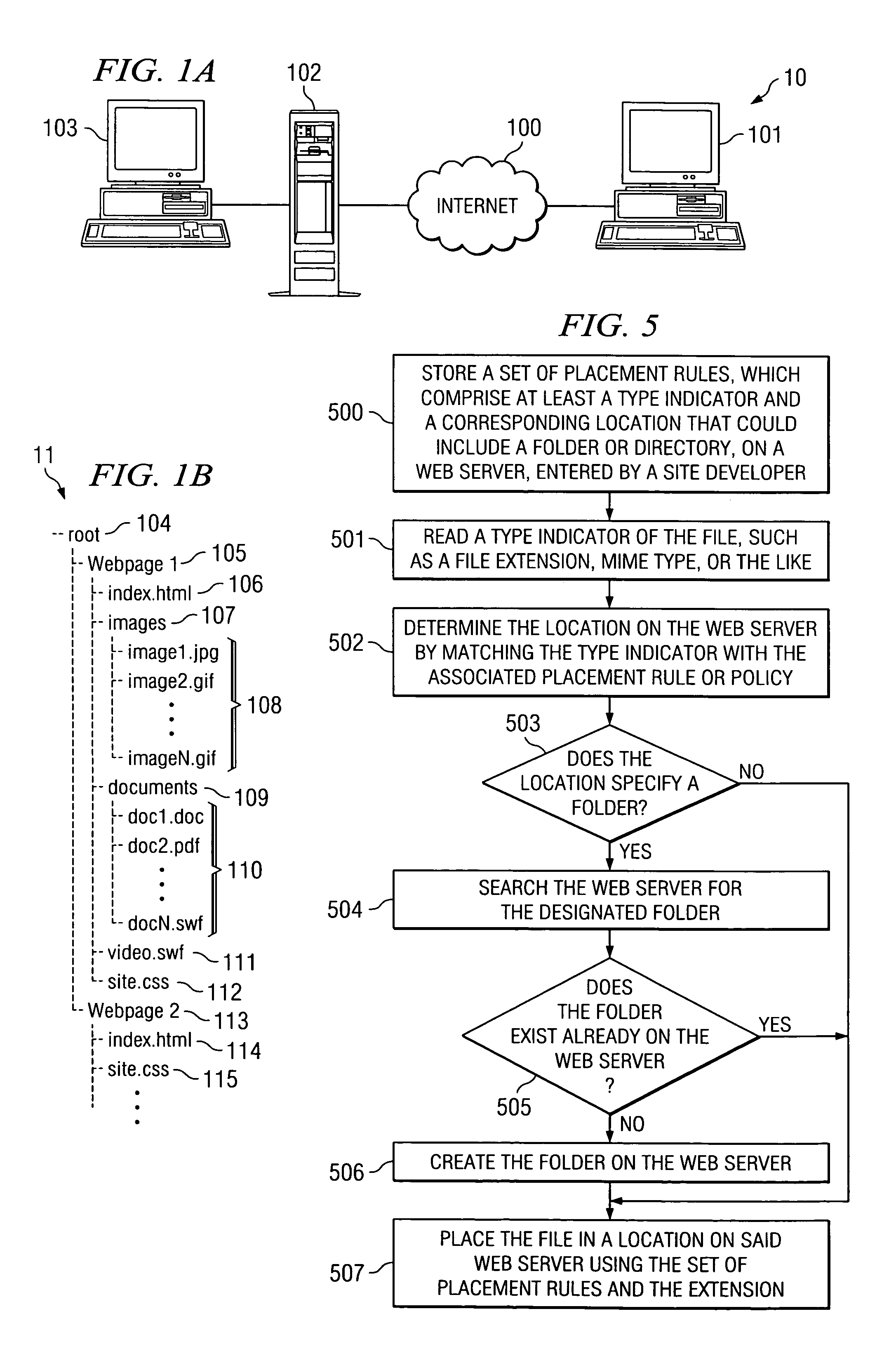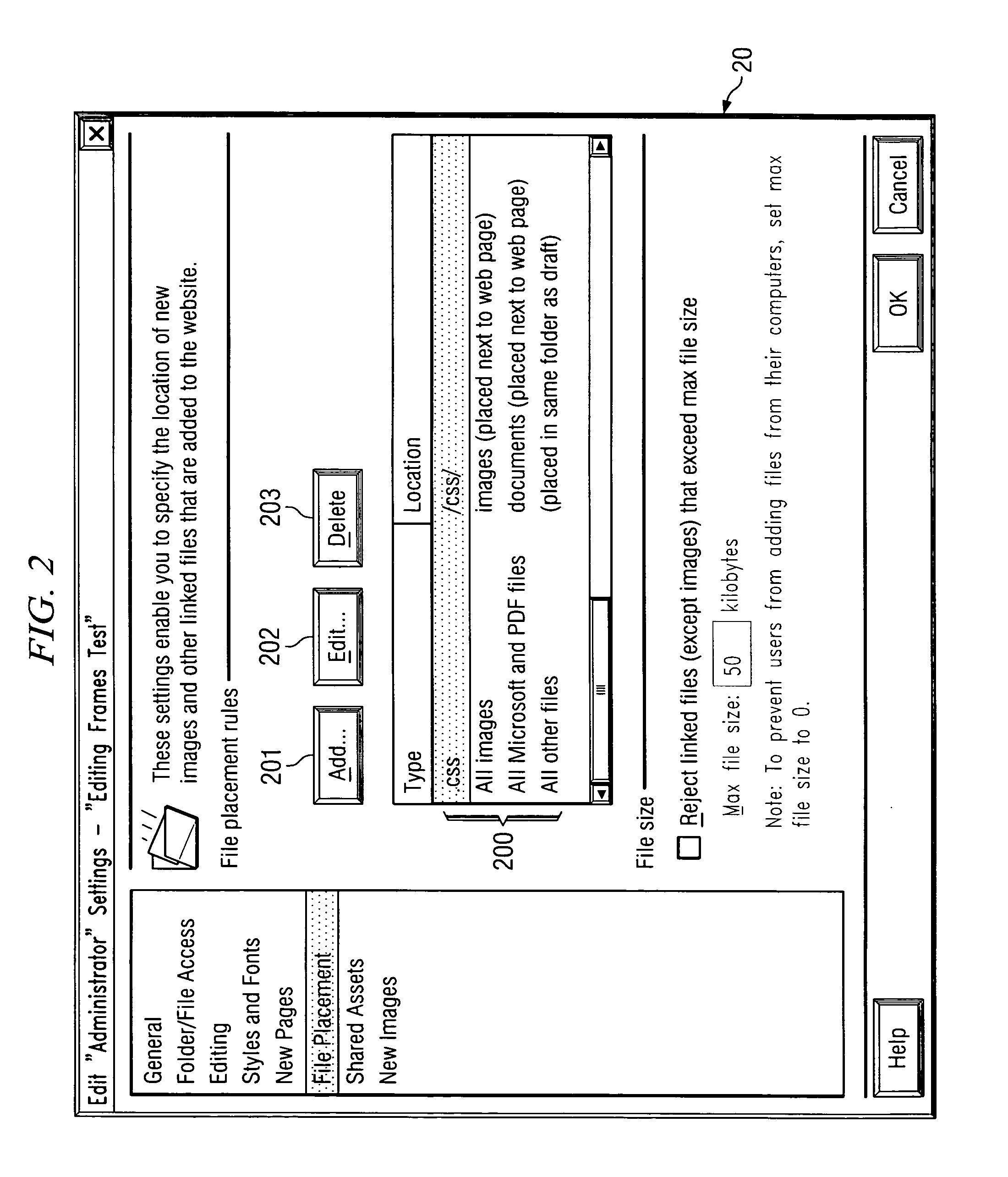Configurable file placement
- Summary
- Abstract
- Description
- Claims
- Application Information
AI Technical Summary
Benefits of technology
Problems solved by technology
Method used
Image
Examples
Embodiment Construction
[0022]FIG. 1A is a block diagram illustrating system 10 as a part of the World Wide Web. Internet 100 facilitates user 101 accessing Web pages and Web sites stored on Web server 102. User 101 would typically enter the URL of the Web page that he or she desires to view. The URL or its equivalent is transmitted over Internet 100 to Web server 102, which locates the HTML file associated with that Web page and transmits it back to user 101. The Web browser running on user 101 would read and render the HTML code received from Web server 102 and make repeated requests to Web server 102 for any secondary dependent or linked files that are to be displayed in the Web page.
[0023]In the beginning of the process, Web designer 103 designed the Web page that includes the HTML file and all of its secondary files. After the design was complete, Web designer 103 uploaded the files that made up the particular Web page. Subsequently, if Web designer 103 were to edit the Web page, those files would be ...
PUM
 Login to View More
Login to View More Abstract
Description
Claims
Application Information
 Login to View More
Login to View More - R&D
- Intellectual Property
- Life Sciences
- Materials
- Tech Scout
- Unparalleled Data Quality
- Higher Quality Content
- 60% Fewer Hallucinations
Browse by: Latest US Patents, China's latest patents, Technical Efficacy Thesaurus, Application Domain, Technology Topic, Popular Technical Reports.
© 2025 PatSnap. All rights reserved.Legal|Privacy policy|Modern Slavery Act Transparency Statement|Sitemap|About US| Contact US: help@patsnap.com



